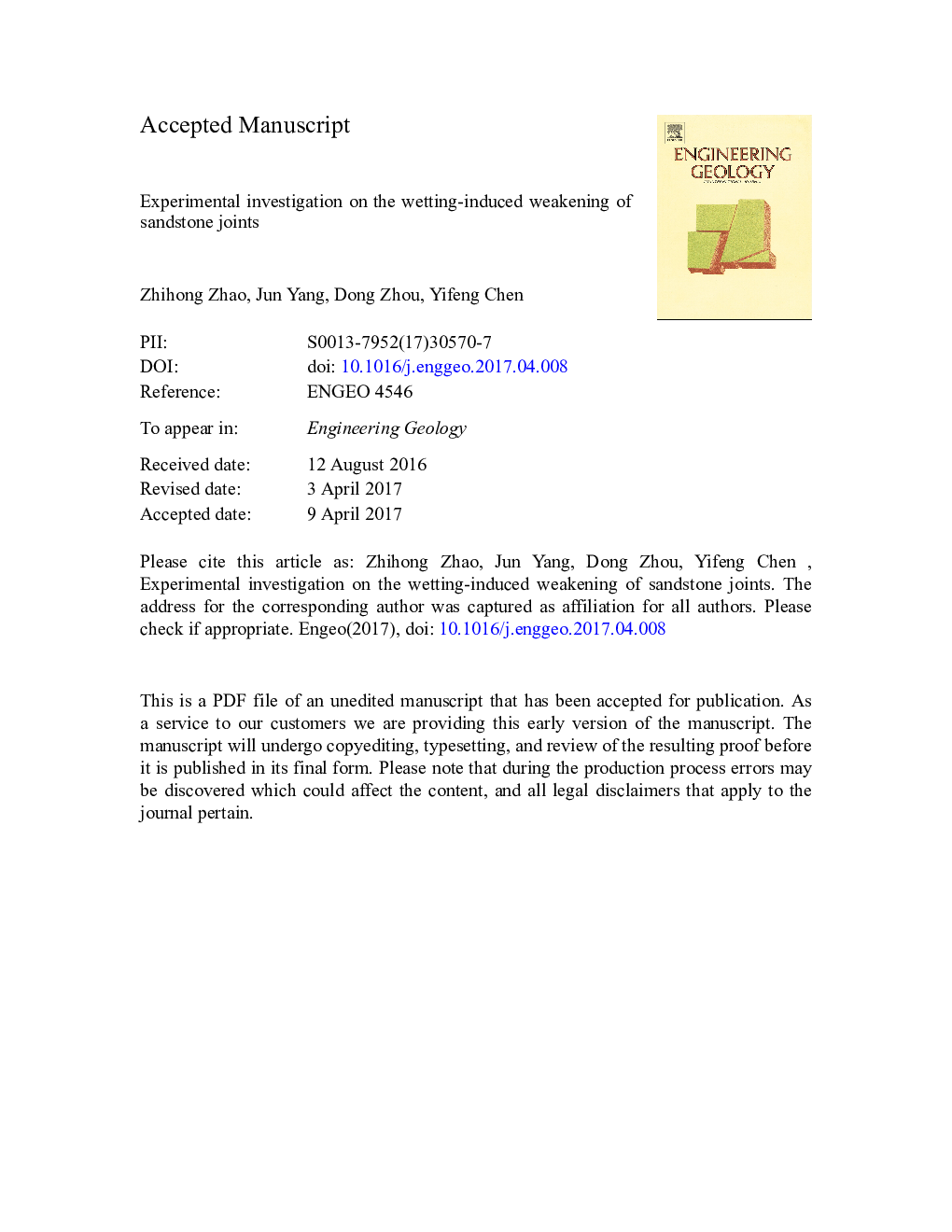| Article ID | Journal | Published Year | Pages | File Type |
|---|---|---|---|---|
| 5787562 | Engineering Geology | 2017 | 30 Pages |
Abstract
The effect of water on the shear behavior of joints in rock is critical for determining the stability of jointed rocks subjected to changes in water levels. In this study, a series of direct shear tests on joints in dry and wet sandstone samples were conducted under constant normal loads to investigate the influence of wetting on joint shear behavior. The results show that the peak shear strength of sandstone joints can be lowered by about 20%-24% owing to wetting, but the saturation-induced reduction of joint shear strength is probably not sensitive to the duration of immersion. The deformation behavior of sandstone joints can also be affected by wetting in that peak shear displacement can increase, joint shear stiffness may be reduced, and shear-induced normal displacement may switch from dilation to contraction. A simplified hypothetical example of a steep rock slope was used to demonstrate the role of wetting in lowering the factor of safety. This example indicated that only considering the purely mechanical effect of pore pressure, but neglecting the wetting-induced weakening of rock joints may overestimate the slope stability and be highly risky for practical rock engineering.
Keywords
Related Topics
Physical Sciences and Engineering
Earth and Planetary Sciences
Geotechnical Engineering and Engineering Geology
Authors
Zhihong Zhao, Jun Yang, Dong Zhou, Yifeng Chen,
